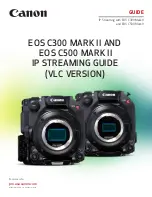
Additionally, there are five different ways of making exposures.
The chosen method is set on the selector scale on the side wall of the camera. The effect of these settings is:
1. With the indicator set to "O" (- normal setting), the film is advanced after exposure, the shutter is cocked and the mirror returns to
the focusing position.
2. With the indicator set to "S" (- speed setting), the reaction time between release and exposure is reduced to a minimum because
with this setting, the mirror is lifted, the auxiliary shutter is opened and the diaphragm is slipped down to the pre-set value
beforehand.
3. With the indicator set to "SW' (- speed repeat setting), the result is the same as With the "S" setting above, but the camera
remains at this setting after exposure.
4. With the indicator set to "A" (- automatic setting), the camera continues to make exposures as an exposure signal is given and the
magazine exposure counter shows that it contains unexposed film. The exposure signal can be given, for example, by a release cord.
The time between each exposure is approximately 1 sec. The exposure values from 1 - 1/15th sec. should be avoided but if they have
to be used, it is important that the release button remains depressed until the between-lens shutter completes the exposure.
Otherwise the auxiliary shutter will close and interrupt the exposure.
5. With the indicator set to "AS" (=automatic speed setting), the result is the same as at the automatic setting above, except that the
camera remains at the "S" setting after the exposure signal.
B and T Exposures
Exposure times between 1 sec. and 1 minute, which are to be released by means of the release button or remotely by radio or cord,
should have the shutter set to "B". For time exposures in excess of 1 minute, the shutter should be opened by moving the lever to "T"
(with the shutter set to "B"). To close the shutter, set the time lever back to the "O" setting. This advances the film and cocks the
shutter. To save the batteries use the time lever for exposures in excess of 1 minute and also when making exposures with the self-
timer.
Alternative Release Methods
There are two releases on the camera front and one on the side. Normal exposures are made with a release button, which can be
attached to either of the two front sockets.
To work away from the camera, release cords measuring 1 ft., 10 ft. or 20 ft. can be connected to either of the two front sockets.
When using these cords, the release button need not be removed and can be used as an alternative release.
The side socket is used to recharge batteries in the camera with the recharge unit and also in conjunction with the release cord SK150
when making exposures at greater distances from the camera, e.g. with the 100 ft. connecting lead.
Programmed exposure with fixed intervals from one frame every 2 seconds to one frame every 60 hours can be obtained with the
timer. This is connected to the side socket of the camera. The timer is electric and runs off a mains supply.
Remote-control Release by Radio
A receiver is mounted to the camera accessory shoe and takes power from the camera batteries. A tone transmitter operating on a 27
mc/s radio control band is employed to send a release signal to the camera. (In Britain, Post Office authority is required to operate
this equipment).
The Hasselblad 500EL Batteries
The electric motor is powered by one or two rechargeable nickel cadmium batteries. With one battery, 1,000 exposures can be made
on each charge. With two batteries, 2,000 exposures are possible before recharging.
The recharging unit Model I is supplied with the camera and is designed to recharge one or two batteries in the camera. The
recharging time for each battery is 14 hours. A recharging unit Model II is available, intended for charging batteries in the camera or
in the Hasselblad battery box. It is equipped with adjustable timer which automatically stops the charging after the pre-set time has
elapsed.
THE HASSELBLAD 500 EL
www.mr-alvandi.com
Summary of Contents for 1000 F
Page 18: ...WILD LIFE www mr alvandi com ...
Page 52: ...THE CUT FILM ADAPTOR www mr alvandi com ...
Page 54: ...Daylight Exposure Values www mr alvandi com ...
Page 55: ...Filters for Black and White Film www mr alvandi com ...
Page 59: ...Close Ranges with 50 60 mm Distagon and Planar 80 mm www mr alvandi com ...
Page 60: ...Close Ranges with 120mm S PLANAR 150 200 mm SONNAR www mr alvandi com ...
Page 62: ...Conversion of Film Speed Systems Colour Films www mr alvandi com ...
Page 63: ...Black and White Films www mr alvandi com ...
Page 64: ...www mr alvandi com ...
















































